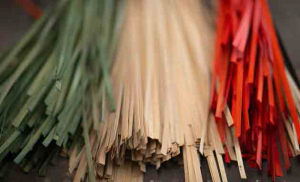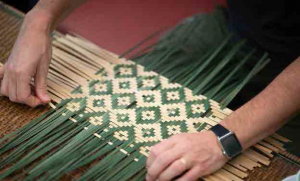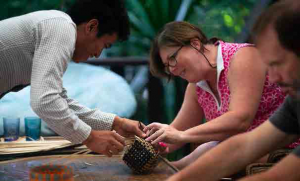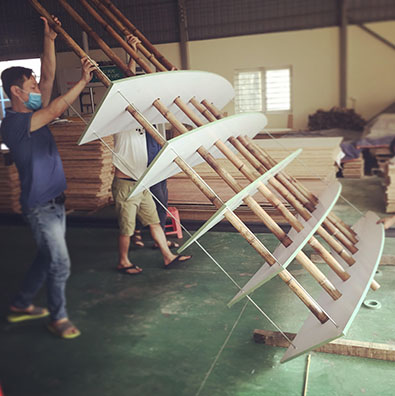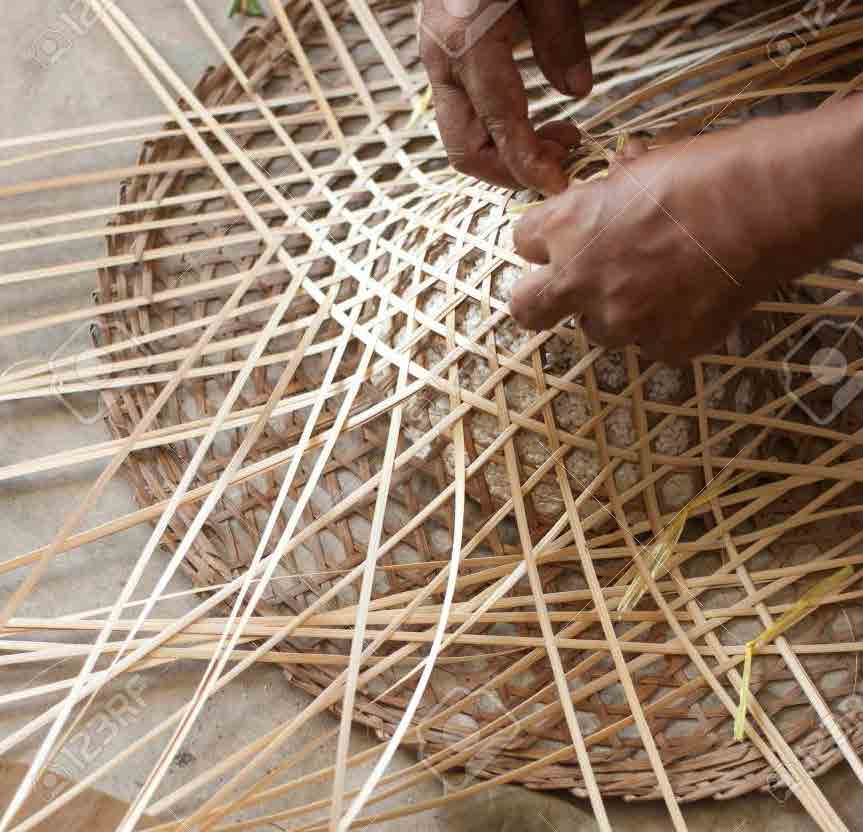Bamboo Design & Construction
Kecho lab
17th March 2020 8:45 GMT
Overview
Harvesting & Treatment
Bamboo Design
Structural Systems
Model Making
Bamboo Carpentry
Bamboo Construction
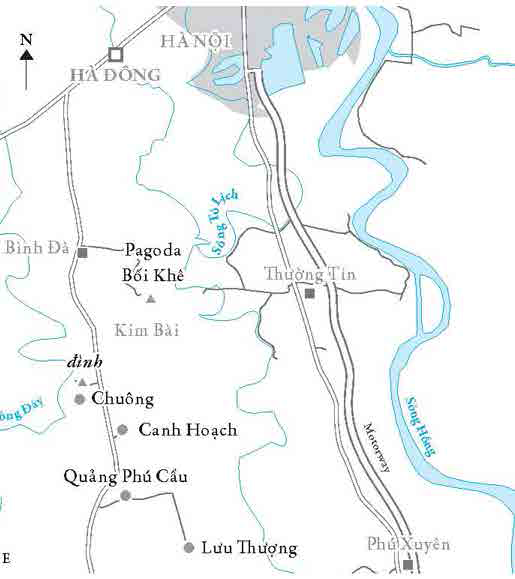
Chuong village

Bamboo Design & Construction Workshops
Kecho lab offers a wide range of workshops, inspired by the crafts of the villages around Hanoi. These crafts involve natural materials such as bamboo, wood, clay etc. By doing the workshop, we hope to increase awareness of these crafts (some crafts are already in the verge of disaapearing), thus help to sustaining thosee communities and at the same time provide new skills for the participants.
The Bamboo Design and Construction Workshops aim to provide useful information of bamboo resources and potentialities to participants, and equip them with necessary skills in bamboo design, modeling and construction with bamboo and the related materials.
Past workshops include making bamboo chairs and traditional post-beam connections, with the participation of artisans from Phu Tho and Bac Giang provinces.
- Example of a 1:1 scale mock-up session
Timeline
Overview
Imran Perretta: I studied it at school around the time the Twin Towers came down and it was also around that time that my body was growing at this exponential rate and I started to be seen as a public threat. I think reading the story about these young boys and how they were marked for their capacity for violence chimed with me because that was the way in which my body was also starting to be seen and it was a very uncomfortable realisation. The boys in the story were seeing this man’s house in a time of devastation just after the Blitz and I was interested in the parallel with the beginnings of the war on terror around the same time. So there were all these cultural and historical markers that meant that my narrative had this sort of eerie symbolic relationship with the narrative in the short story and this has always stuck with me.
Harvesting & Treatment
I was interested in talking about a specific experience of structural oppression and Islamophobia in the hope that, if I spoke very lucidly about some of the things I’ve seen, then it would resonate in one way or another with people who had seen or heard something similar. I was reticent to talk about political forces like austerity and the war on terror in generic terms or just as pieces of legislation when what they do is affect families and individuals in a very intimate way. So what I was trying to do was to use very intimate and personal experiences of having been wronged as a way of aiming upwards at the state and authoritarian politics. I’m coming from a position of trying to critique power structures that have laid a path for me, and I can only do that in an embodied way, otherwise I’d be a commentator rather than someone who has actually experienced these things.
Bamboo Design
The building is a community centre that is slowly falling into disrepair because the local council budget was under austerity measures. I wanted to draw attention to its slow decay and the fact that if you erode social provision, what you are eroding are communities, families and real people and so the building becomes a protagonist in the work. You see liquid and gas entering the space as this sort of ingress, these insidious outside forces creeping in as well as drawing attention to the fact that the building is porous and falling apart.
Structural Systems
The core interest for me is how to reference images from conflict and war without actually having to show them—how you reference violence, especially state violence and material devastation, without having to show the people or the places that have suffered in reality. That is really important. We have become so accustomed to seeing black and brown deaths on television and to seeing certain bodies treated with a certain sort of callousness and coldness by the camera. So for me it is how can you show and allude to violence and conflict without actually having to show its real-life effects? How to talk about the things we’ve endured without having to further endure them, that is part of the mission, the political strategy of the work.
Common structural forms
- Basic Framing
- Post & Beam
- Portal Frame
- A-Frame
- Curves & Arches
- Leaves & Fans
- Central Tower
- Yurts
- Domes
- Shells
- Tensiles/ Longspans
- Hybrids
- Others
References
Bamboo Structural Forms
https://www.youtube.com/watch?v=nBtW4vaY198
Model Making
Bamboo physical modeling might differ a great deal from conventional physical modeling. Models are helpful in design meetings as well as in construction site. Typical scales are 1/100, 1/50, 1/30, 1/20, 1/3 and even 1:1 scale mock-ups. Bamboo models are critical within the design (with concept design models) and construction process (with more completed models, maybe accompanied by refined 3d models). Within this process from design to construction, there might be several different models, depending on the complexity of the design, in order to study structural design options, connections and details and so on.
Bending bamboo: Many bamboo buildings require curve bamboo, which necessitate bending bamboo sticks. This process can use steam and boiling method or use fire heat to bend the sticks.
While designing with bamboo, one needs to consider the Spans, Overhangs, Roof Pitches, FLoor to Floor Levels.
The Common Issues with bamboo modeling include bending, overhang, rotation, twisting, detail at junctions, inward bending arches, and weight of structure etc (1)
Model making process
Safety. Be careful with cutting and gluing area.
Typical steps of making a bamboo model
- Plan
- Preare scaled drawings
- Make the base for the model
- Build the model
- Revise
- Glue the model
- Test (strengh, movement, twisting)
- Adjust and Complete the model
List of materials
Fixing methods
- String
- Elastic bands
- Masking tape
- Hot glue
- Super glue
Tips and Cautions
(1) better bamboo building
References:
Introduction to bamboo modeling:
https://www.youtube.com/watch?v=YCjXWI5Z1EM
Making bamboo model
https://www.youtube.com/watch?v=-sWLh2m7hMw
Bamboo Carpentry
That’s very important. People of colour are rendered both visible and invisible at all times and against their will. There’s no better example of that than in the government’s Prevent Strategy and how it has forcibly made visible Muslim communities throughout the UK and at the same time has made them invisible in strategic ways. So you have this sense where you are made incredibly visible to the authorities but you can be detained and not seen by your family and friends for years at a time. Visibility becomes this key tool for agency that has been taken away by the state, so trying to crop people and trying to give them back their anonymity was a way of trying to give them back their agency. Surveillance seems to be a key theme in all your films, whether in your choice of camera angles, the way shots are framed or in the use of drones.
Bamboo Construction
And I happen to belong to one that has been surveilled the most in a post-9/11 context. So my sense of self is invariably conditioned by the way I am seen by the state: I am hyper-visible and have been since I was 14 years old, the first time I was stopped and searched by the police. So part of me going on this long and winding road to becoming an artist film-maker is about trying to find a visual language for my own visibility but one that tries to resist the dominant or normative forms of cinematic and state visibility. I’m trying to find something else that can reference my visibility but also critique it. That’s really my mission, so to speak.

